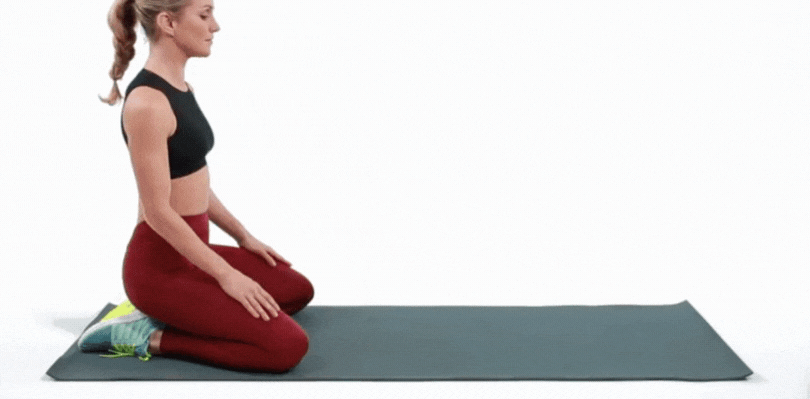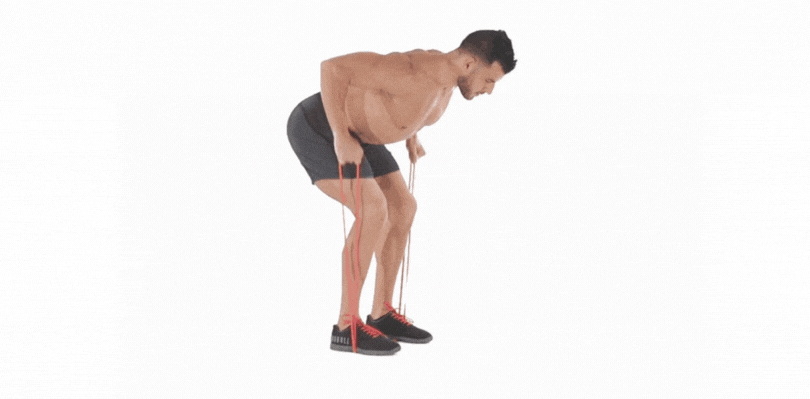In our fast-paced lives, muscle strains are an all-too-common occurrence, but fear not – we’ve got your back. In this comprehensive blog post, we will dive deep into the realm of muscle strain workouts, equipping you with the knowledge and tools to not only recover but also thrive.
Discover a treasure trove of effective exercises that target muscle strains head-on, transforming weakness into unyielding strength. We’ll explore the best treatments, both conventional and holistic, to expedite your recovery and prevent future injuries. Whether you’re an athlete, fitness enthusiast, or simply seeking a pain-free life, this guide is your ultimate resource for conquering muscle strains and emerging as your most robust self. Let’s sculpt a body that stands resilient against the trials of life – together!
How Muscle Strain Happens
Muscle strain, often referred to as a pulled muscle, occurs when muscle fibers are stretched or torn due to excessive force or overexertion. It commonly happens during activities that involve sudden, intense movements or when muscles are stretched beyond their limits. These activities can include lifting heavy objects, improper lifting techniques, sudden accelerations or decelerations, and inadequate warm-up before exercise.
The tearing of muscle fibers leads to pain, swelling, and reduced muscle function. In severe cases, it can result in muscle spasms, bruising, and limited range of motion. Understanding the causes and mechanics of muscle strain is crucial in preventing such injuries and implementing effective recovery strategies.
Muscle Strain Workouts
Here are some effective muscle strain workouts and exercises along with step-by-step instructions on how to perform each one correctly:
Static Stretching
Static stretching helps relax and lengthen muscles, reducing the risk of strain.

How to do it:
Choose the muscle group you want to stretch (e.g., hamstrings). Stand or sit comfortably, then slowly and gently stretch the muscle to its full range of motion. Hold the stretch for 15-30 seconds, feeling a mild tension, and then relax. Repeat 2-3 times for each muscle group.
Wall Angels (Scapular Wall Slides)
This exercise improves shoulder mobility and stability, reducing the risk of upper-body muscle strains.
How to do it:
Stand with your back against a wall, feet shoulder-width apart. Raise your arms to shoulder level, keeping your elbows and wrists against the wall. Slowly slide your arms upward, then downward, making a “snow angel” motion. Repeat for 2-3 sets of 10-15 reps.
Bodyweight Squats

Strengthening the quadriceps and hamstrings can prevent leg muscle strains.
How to do it:
Stand with your feet shoulder-width apart. Lower your body by bending your knees and hips, as if you’re sitting back into a chair. Keep your back straight and chest up. Go as low as your flexibility allows, ideally until your thighs are parallel to the ground. Push through your heels to return to the starting position. Perform 3 sets of 12-15 reps.
Planks

Building core strength is essential to support the lower back and prevent strains.
How to do it:
Start in a push-up position with your forearms on the ground, elbows under your shoulders, and toes on the floor. Engage your core and hold this position for 20-30 seconds to start. Gradually increase the duration as you become more comfortable.
Bridge Exercise

This exercise strengthens the lower back and glutes, reducing the risk of strains in the lower body.
How to do it:
Lie on your back with your knees bent and feet flat on the floor. Lift your hips off the ground, creating a straight line from your shoulders to your knees. Squeeze your glutes and hold for 20-30 seconds. Perform 2-3 sets.
Resistance Band Exercises

Using resistance bands can help strengthen various muscle groups without putting excessive strain on them.
How to do it:
For example, you can use a resistance band for bicep curls. Step on the center of the band and grasp the handles. Keep your elbows close to your sides and curl your hands toward your shoulders. Perform 3 sets of 12-15 reps.
Wall Squats With A Stability Ball

This exercise builds leg strength while maintaining proper alignment.
How to do it:
Place a stability ball between your lower back and a wall. Step your feet forward slightly and lower your body into a squat position, keeping the ball between you and the wall. Keep your knees aligned with your ankles and maintain a straight back. Hold for 20-30 seconds and repeat for 2-3 sets.
Remember to consult with a healthcare professional or a certified trainer before starting any new exercise program, especially if you’ve had previous muscle strains or injuries. Proper form and gradual progression are key to preventing future muscle strains and promoting overall muscle health.
What Doctors Say About Muscle Strain
Doctors emphasize that muscle strains are common and often result from overexertion or improper form during physical activities. They describe muscle strain as the stretching or tearing of muscle fibers, leading to pain, swelling, and reduced function. Seeking prompt medical attention is advised for severe strains, as they can indicate a more significant injury.
Doctors recommend the R.I.C.E. protocol (Rest, Ice, Compression, Elevation) in the initial stages of treatment to reduce inflammation and provide relief. Additionally, gentle stretching and strengthening exercises are recommended during the recovery phase to prevent future strains. Proper warm-up, good posture, and listening to your body are key to avoiding muscle strains and maintaining muscle health.
Treatments For Muscle Strain
Rest
Rest is essential for the initial phase of healing. Avoid activities that strain the affected muscle to allow it to recover. Depending on the severity of the strain, this may range from a few days to a few weeks of reduced activity.
Ice
Applying ice to the injured area can help reduce pain and inflammation. Use an ice pack wrapped in a thin cloth and apply it to the strained muscle for 15-20 minutes every 1-2 hours during the first 48 hours after the injury. Be cautious not to apply ice directly to the skin to prevent frostbite.
Compression
Wrapping the strained area with an elastic bandage or compression sleeve can help minimize swelling and provide support. Ensure the compression is snug but not too tight to avoid interfering with blood circulation.
Elevation
Elevating the injured limb or muscle above the level of the heart can help reduce swelling by allowing fluids to drain away from the injured area. This is particularly effective for lower limb muscle strains.
Over-The-Counter Pain Relief
Non-prescription pain relievers like ibuprofen or acetaminophen can help manage pain and reduce inflammation. Consult a healthcare professional before using these medications, especially if you have any underlying health conditions or are taking other medications.
Physical Therapy
In cases of moderate to severe muscle strains, a physical therapist can design a customized rehabilitation program. This typically includes stretching and strengthening exercises tailored to your specific injury, helping to restore flexibility and muscle function while preventing future strains.
It’s crucial to consult with a healthcare provider for proper diagnosis and guidance on treatment, especially if you suspect a severe muscle strain or if the strain does not improve with self-care measures. More advanced treatments like ultrasound therapy or corticosteroid injections may sometimes be necessary. Additionally, following a gradual return to normal activities and incorporating preventive measures into your routine can help reduce the risk of future muscle strains.
Tips To Do Muscle Strain Workouts
Here are a few tips for performing muscle strain workouts effectively and safely:
Warm Up Adequately
- Warming up is crucial to prepare your muscles and reduce the risk of strains. Begin with 5-10 minutes of light cardiovascular exercise like jogging or jumping jacks to increase blood flow and raise your body temperature.
- Follow this with dynamic stretching, involving controlled movements that mimic the exercises you’re about to perform. For example, before squats, perform leg swings or hip circles to activate the muscles and joints you’ll be using.
Maintain Proper Form
- Incorrect form during exercises can lead to muscle strains and other injuries. Ensure you understand the correct technique for each exercise.
- Focus on proper body alignment, keeping your back straight, core engaged, and joints in the correct position. Utilize mirrors or have a trainer provide feedback to help maintain good form.
Gradual Progression
- Avoid over-exertion by gradually increasing the intensity, duration, or weight of your workouts. Sudden spikes in intensity can strain muscles.
- Use the principle of progressive overload, which involves progressively increasing resistance or difficulty to challenge your muscles without causing strain. This gradual approach helps your muscles adapt and become stronger over time.
Listen To Your Body
- Pay attention to how your body responds during workouts. If you feel pain beyond typical muscle fatigue or discomfort, stop the exercise immediately.
- Muscle fatigue is normal during a workout, but sharp or persistent pain could be a sign of strain. If this occurs, rest, apply ice, and seek medical advice if necessary.
- Adequate rest between workouts is essential. Give your muscles time to recover and repair, as overtraining can increase the risk of muscle strains.
Incorporating these tips into your muscle strain workouts can significantly reduce the risk of injury and help you achieve your fitness goals safely. Always remember that consistency, patience, and proper technique are key to long-term success and injury prevention.
FAQs
How long does it take to recover from a muscle strain?
Recovery time for a muscle strain varies depending on the severity of the injury. Mild strains may heal within a week or two with proper rest and treatment, while more severe strains can take several weeks or even months. It’s essential to follow a structured rehabilitation plan and consult a healthcare professional for guidance on your specific case.
Can I continue working out with a muscle strain?
It depends on the severity of the strain. In most cases, it’s advisable to rest the affected muscle and avoid strenuous workouts until you’ve fully recovered. Engaging in physical activity too soon can worsen the injury. However, some low-impact exercises and gentle stretching may be recommended by a healthcare provider during the recovery process.
What can I do to prevent muscle strains during workouts?
To prevent muscle strains, warm up adequately before exercising to increase blood flow and flexibility. Maintain proper form and technique during exercises to reduce the risk of overexertion and strain. Gradually progress in terms of intensity, weight, or duration of your workouts. Ensure you have a balanced fitness routine that includes both strength training and flexibility exercises. Lastly, listen to your body and rest when needed to avoid overtraining and muscle fatigue.

